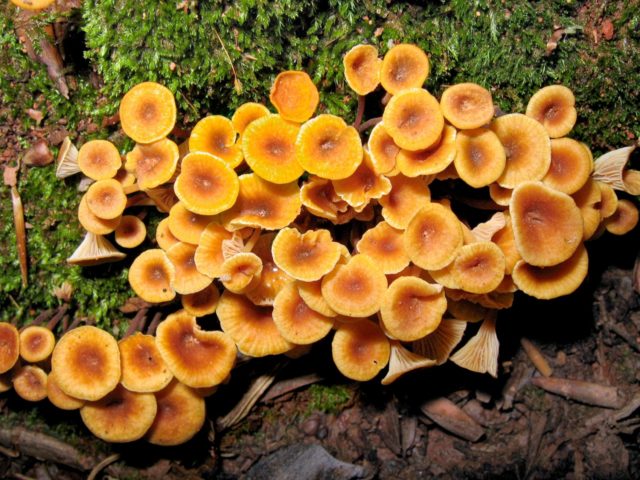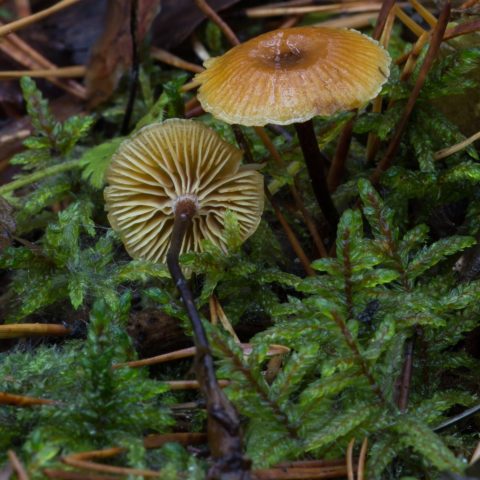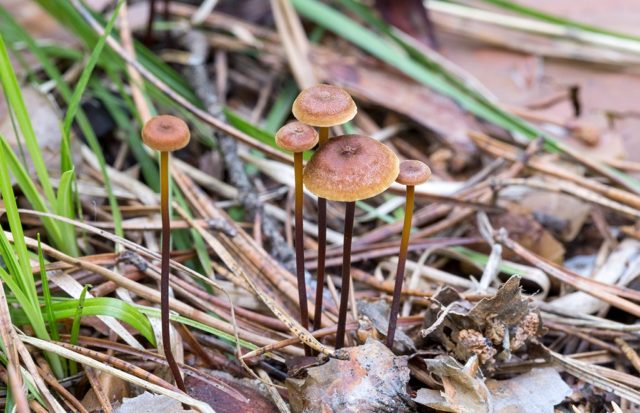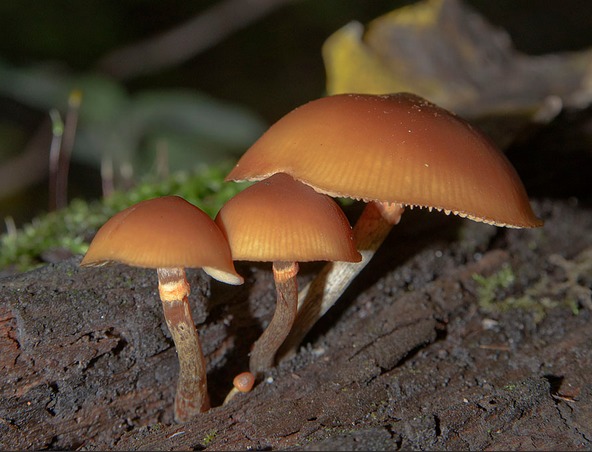Content
Xeromphalina campanella (Xeromphalina campanella) or bell-shaped omphalina is a mushroom that belongs to the numerous genus Xeromphalina, the Mycene family. It has a hymenophore with rudimentary plates.
What do bell-shaped xeromphalins look like?
This mushroom is very small. The size of its cap is similar to a 1-2 kopeck coin, and does not exceed 2 cm in diameter. The color of the bell-shaped xeromphaline is orange or yellowish-brown.
The hat has a rounded convex shape with a characteristic depression in the center, and is translucent at the edges. In older specimens, it can fully straighten or even curl up. Rare plates descend along the pedicle; they are yellowish-orange or cream colored. On closer inspection, you can see the transverse veins connecting the plates to each other. The surface of the cap is smooth, shiny, radially striped due to the plates translucent from below, in the center its color is more saturated - dark brown, at the edges - lighter.
A very thin fibrous stem is 0.1-0.2 cm thick and 1 to 3 cm high. In the upper part it is colored yellow, and in the lower part it is orange-brown with fine white pubescence along the entire length. The leg has a cylindrical shape, slightly widened at the top, with a noticeable thickening at the base. The flesh of the mushroom is thin, reddish-yellow, without a pronounced odor.
Where do bell-shaped xeromphalins grow
They grow on decaying wood, most often pine or spruce. In the forest, they are found in numerous colonies. These mushrooms are typical for a natural zone with a temperate continental climate, where the average air temperature in July does not exceed 18 ° C, and winters are severe and cold. The coniferous forests of these latitudes are called taiga. Bright orange caps are easy to spot on stumps in May. The fruiting season lasts from late spring to the end of autumn.
Is it possible to eat bell-shaped xeromphalin
Nothing is known about the edibility of the mushroom. Research in the laboratory has not been carried out, and experts do not advise trying to taste unfamiliar representatives of the mushroom kingdom, very similar to the deadly poisonous gallerinas. Due to its small size, the mushroom cannot be of nutritional value.
How to distinguish bell-shaped xeromphalins
The genus Xeromphalin has 30 species, of which only three are found in Western Siberia - K. bell-shaped, K. stem-shaped, and K. Cornu. It is rather difficult to distinguish these mushrooms, the most reliable way is microscopic examination.
Xeromphaline bell-shaped differs from the other two representatives of its genus, growing on the territory of Russia, in earlier and longer fruiting. The other two species appear only in the middle of summer. These mushrooms also have no nutritional value due to their small size, they are inedible.
An inexperienced mushroom picker may confuse the bell-shaped xeromphaline with the deadly poisonous gallery bordered. However, the latter is slightly larger in size, its cap does not have a depression in the middle and transparency, due to which the lamellar hymenophore is well translucent.
Conclusion
Xeromphaline bell-shaped grows in coniferous forests from May to November. Most often, the mushroom can be found in the spring, the first wave of fruiting is the most abundant. This species does not represent nutritional value due to its tiny size, and nothing is known about its toxicity.












